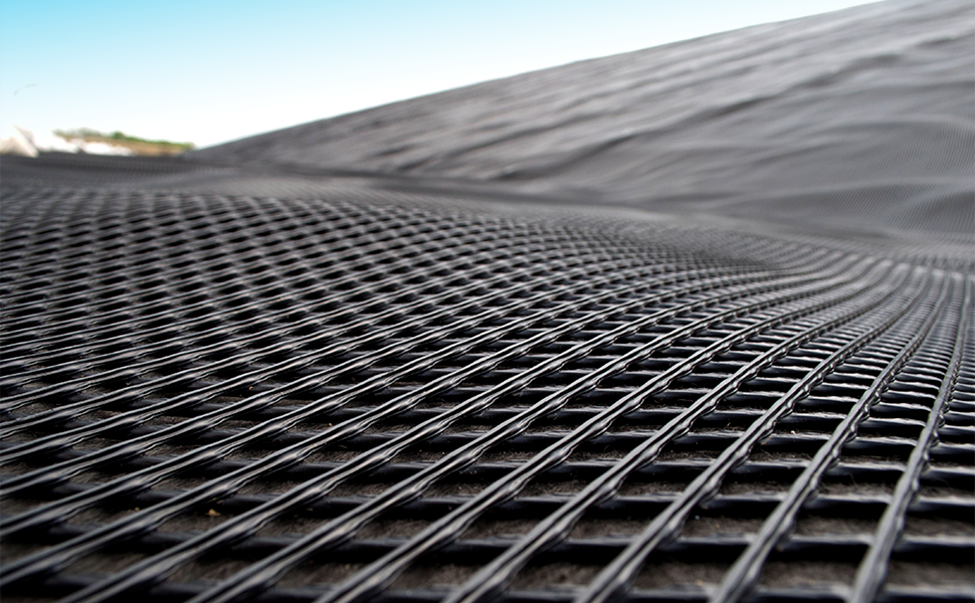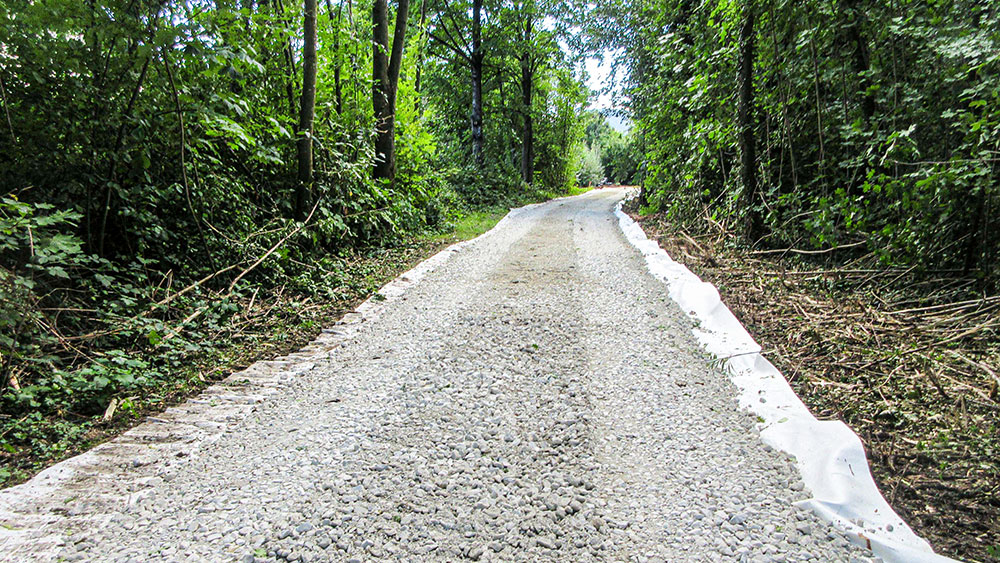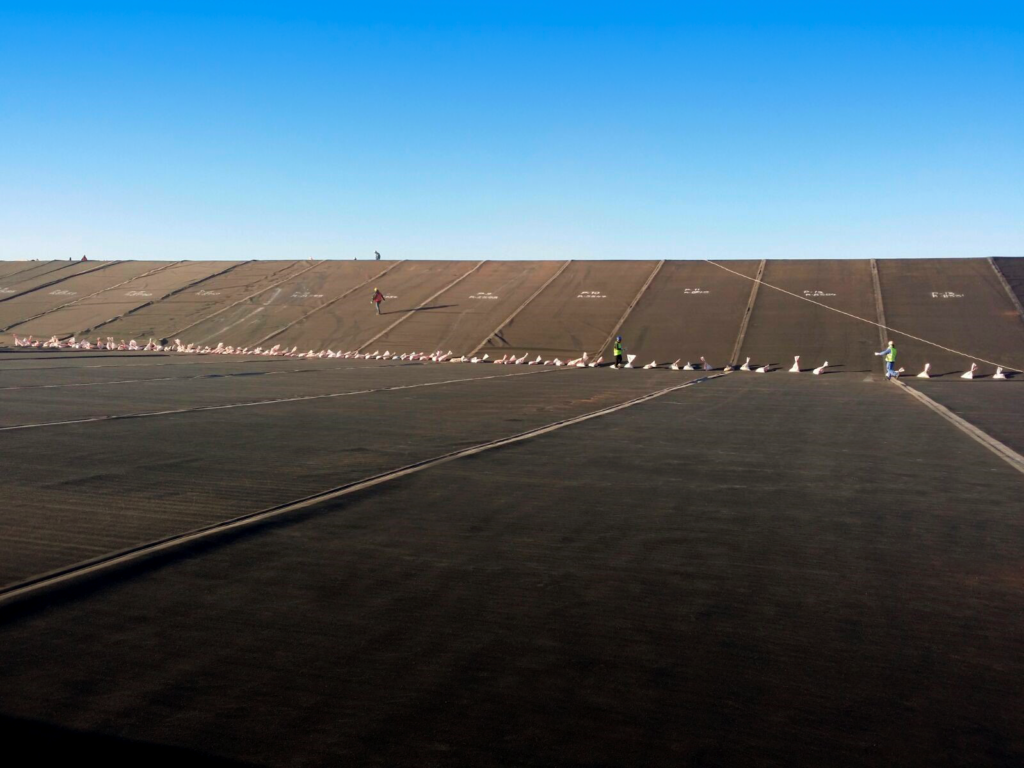How to calculate the allowable flow rate of a geocomposite
July 9th, 2021
By Su Jong Hao, Technical Sales Manager, Solmax Asia-Pacific The Geosynthetic Research Institute’s GRI-GC8 design guide provides a methodology to calculate the allowable flow rate of a geocomposite. But there are additional factors that need to be considered. The GRI-GC8 methodology to calculate the allowable flow rate of the material of choice can be used to determine the factor of safety (FS) in […]
Biodegradable nonwoven geotextiles from NAUE
July 1st, 2021
In civil engineering, geotechnical materials stand for sustainable construction. In addition to classic geosynthetics, NAUE, manufacturer of geotechnical construction materials, presented its first biodegradable nonwoven geotextile, Secutex Green, in 2020. This biodegradable nonwoven geotextile has already proven itself successfully in various applications. For example, in the dunes of the island of Sylt, Germany, and under a construction road […]
GRI-GM19 peel specification
April 1st, 2021
Q: Our liner system is a double composite and along a western tie-in. We need to extrusion-weld the secondary 60-mil (1.5-mm) HDPE (new cell) to an existing secondary 40-mil (1-mm) HDPE (old cell), and the state is continuing to have issues with the fact that we are using the 40-mil (1-mm) GRI-GM19 peel specification as […]
Geosynthetics for Maaden Phosphate Tailings Pond
March 22nd, 2021
In phase 2 of this expansion project, Solmax provided 9,687,519 square feet (900,000 m2) of flawless double-sided, textured FrictionFlex geomembrane for new tailings ponds at a fertilizer plant in Saudi Arabia. The geosynthetics underwent stringent testing by the client and were found to be ideal. Maaden Phosphate Co., a joint venture with Saudi Basic Industries […]
The GMA Techline
August 1st, 2020
Seaming dissimilar geomembranes Q: I kindly request your technical support in the questions below: A nonpolyethylene geomembrane was used in phase 1 of the tailings dam waterproofing system of a gold mine. For the expansion (phase 2), the use of a high-density polyethylene (HDPE) geomembrane is being evaluated. How can the HDPE geomembrane join the bituminous […]
Assessment of condition of an uncovered geosynthetic landfill bottom liner system
June 1st, 2020
By James L. Hanson and Nazlı Yeşiller Composite liner systems consisting of geomembranes (GMs) placed over geosynthetic clay liners (GCLs) commonly are used for containment applications. Such systems are used in base liners for ponds, reservoirs, basins and canals, and bottom and cover liner systems for landfill facilities. Even though the use of GCL-GM composites […]
The GMA Techline
April 1st, 2020
Moderated by George R. Koerner and Y. “Grace” Hsuan Welding Rod Q: This question is in regard to the welding rod intended for welding of geomembranes (both high-density polyethylene [HDPE] and linear low-density polyethylene [LLDPE]). Are there any GRI GM13- or GM17-based requirements for welding rods or are there any white papers or specifications? I […]
International Achievement Awards
April 1st, 2020
Recognizing design excellence in geosynthetics The International Achievement Awards, sponsored by the Industrial Fabrics Association International (IFAI), recognize innovation, technical skill and design excellence in geosynthetic applications. The awards are an annual competition promoting awareness of the specialty fabrics used in thousands of products and applications ranging in size and shape. For more than 70 […]
CETCO launches FLUORO-SORB adsorbent for the remediation of PFAS
June 3rd, 2019
Amid a deeper awareness of the health and environmental impact of per- and polyfluoroalkyl substances (PFAS), CETCO is pleased to announce the launch of FLUORO-SORB® adsorbent, a proprietary, NSF-certified product that effectively treats multiple variants of PFAS. Unlike other sorbent products that are selective and unpredictable in adsorbing PFAS, FLUORO-SORB adsorbent binds the entire spectrum […]
Geocomposite waterproofing for Washington weather
April 1st, 2019
The wet weather in Washington state is a bane to the region’s travel infrastructure, plaguing the pavement with perpetual problems. The westbound 3-mile (5-km) stretch across the US 2/I-5 interchange from Bickford Avenue in Everett, Wash., was in particular need of repair. A valuable pipeline for business and commuting, the bridged area transported an average […]
 TEXTILES.ORG
TEXTILES.ORG







